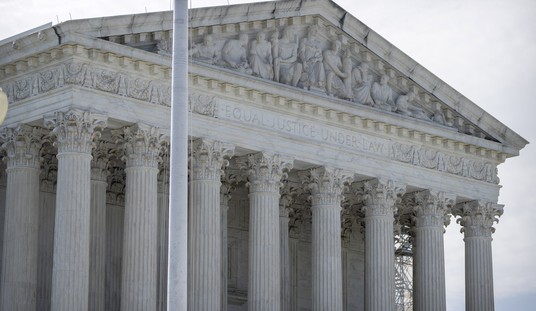Let’s say you were a financial advisor, and a family came to you with the following situation.
They make the median family income in the U.S. -- $52,000. But last year they spent $61,000. That’s right, $9,000 more than they’re making, and it all went on the family credit card. That’s bad enough, but then you find out they already have $311,000 in debt. Would you say they have a problem?
I wish I could say this family was made up. Oh, this particular household isn’t real. But the “family” in this scenario is the federal government, and the amounts at stake are in the billions, not the thousands. The ratio of overspending, however, is accurate. So is the fact that the money they’re being so careless with is our tax dollars.
Ever wonder how a dollar of federal spending breaks down? Do you know what amount goes where? With tax season in full swing and Congress trying to agree on a new budget, it’s a good question to ask. You can find the answer, at least in broad strokes, in a new chart from The Heritage Foundation’s “2015 Federal Budget in Pictures.”
Spending on K-12 education takes 1 cent of each dollar. Transportation: 3 cents. National defense: 17 cents. “Income security,” a term that encompasses such things as tax credits for the poor, welfare programs, etc.: 19 cents. Net interest on the national debt: 7 cents.
But the big players are Social Security (24.3 cents) and spending on Medicaid, Medicare and other health care programs (26.3 cents). Such entitlements, which are beyond the normal budget process, take up more than half of every dollar the federal government spends. And they’re growing at an unsustainable rate.
Recommended
With so many billions flying around, it’s easy to lose track of just how much we’re talking about. Another chart shows us one way to get a handle on it: how much federal spending breaks down to per household. Basically, what’s your share of the budget? Today it’s $28,585. That’s two and a half times what it was in 1962: $11,792. (Both figures are in 2014 dollars.)
Think about that: $28,585. That’s more than half the median family income I mentioned at the beginning of this column. That’s more than enough for a new car, or to make a year’s worth of mortgage payments. And at the current rate of spending, it’s set to hit $34,632 by 2023. That’s only eight years from now.
Yet what does Congress normally do come budget time? Raises the debt ceiling. That’s government-speak for “get a higher credit-card limit.” Except you and I would have to go, hat in hand, to our credit-card company and ask if they’ll raise it (even assuming it was a responsible thing to do). Not federal lawmakers. They just vote to raise the debt ceiling, and presto! Problem solved.
Well, not solved. Kicked down the road. Which is what passes for “solved” anymore.
But it shouldn’t. Especially when you see the last chart I’d like to focus on: the one depicting how the debt limit has risen since 1965. From that year to 1998, the limit increased by $5.6 trillion. But over the last 12 years, the debt limit has jumped by $10.8 trillion.
Talk about unsustainable. It took Congress one third as long to rack up more than twice as much debt. And the end isn’t even in sight.
Think about that the next time there’s talk of a government shutdown over a cut in the rate of how much spending will grow. Hardly anyone, even many so-called budget hawks, is making any serious attempt to cut spending.
So what’s your financial advice? Perhaps it’s time to let Congress know.

























Join the conversation as a VIP Member